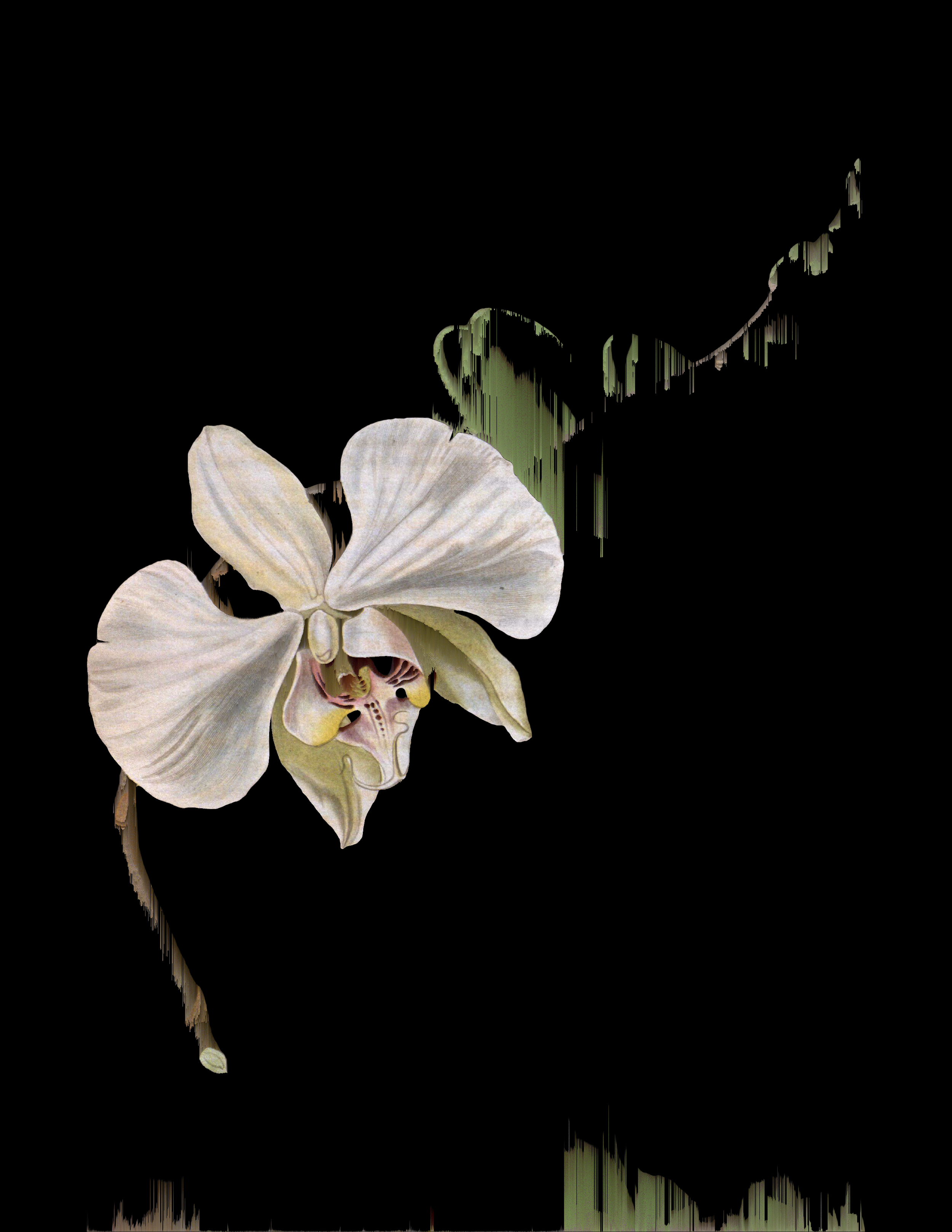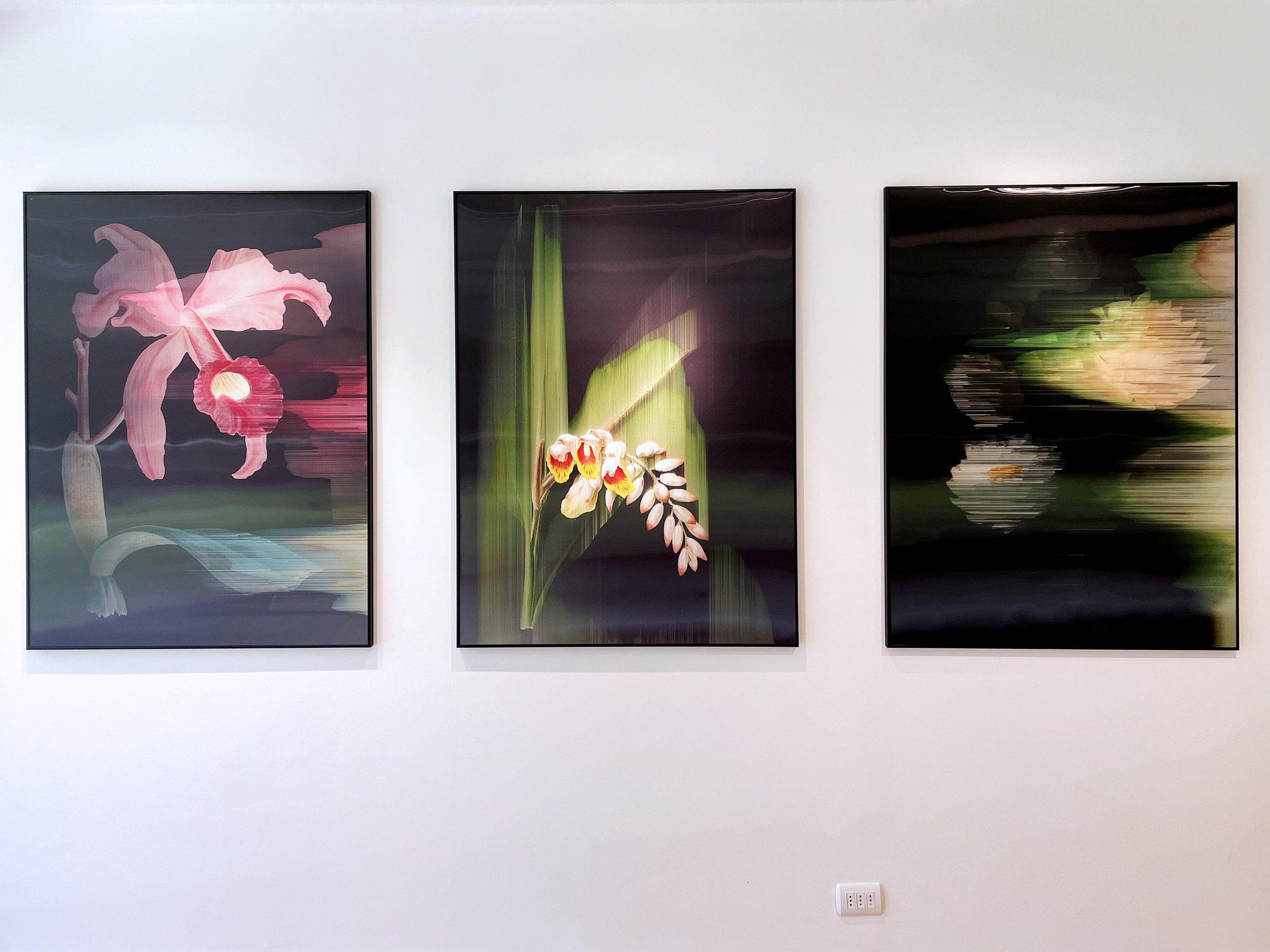Garden of Ghosts
2022 - ONGOING | LENTICULAR PRINTS OF BOTANICAL ILLUSTRATIONS DIGITALLY MANIPULATED WITH A PIXEL-SORTING ALGORITHM | VARIABLE DIMENSIONS
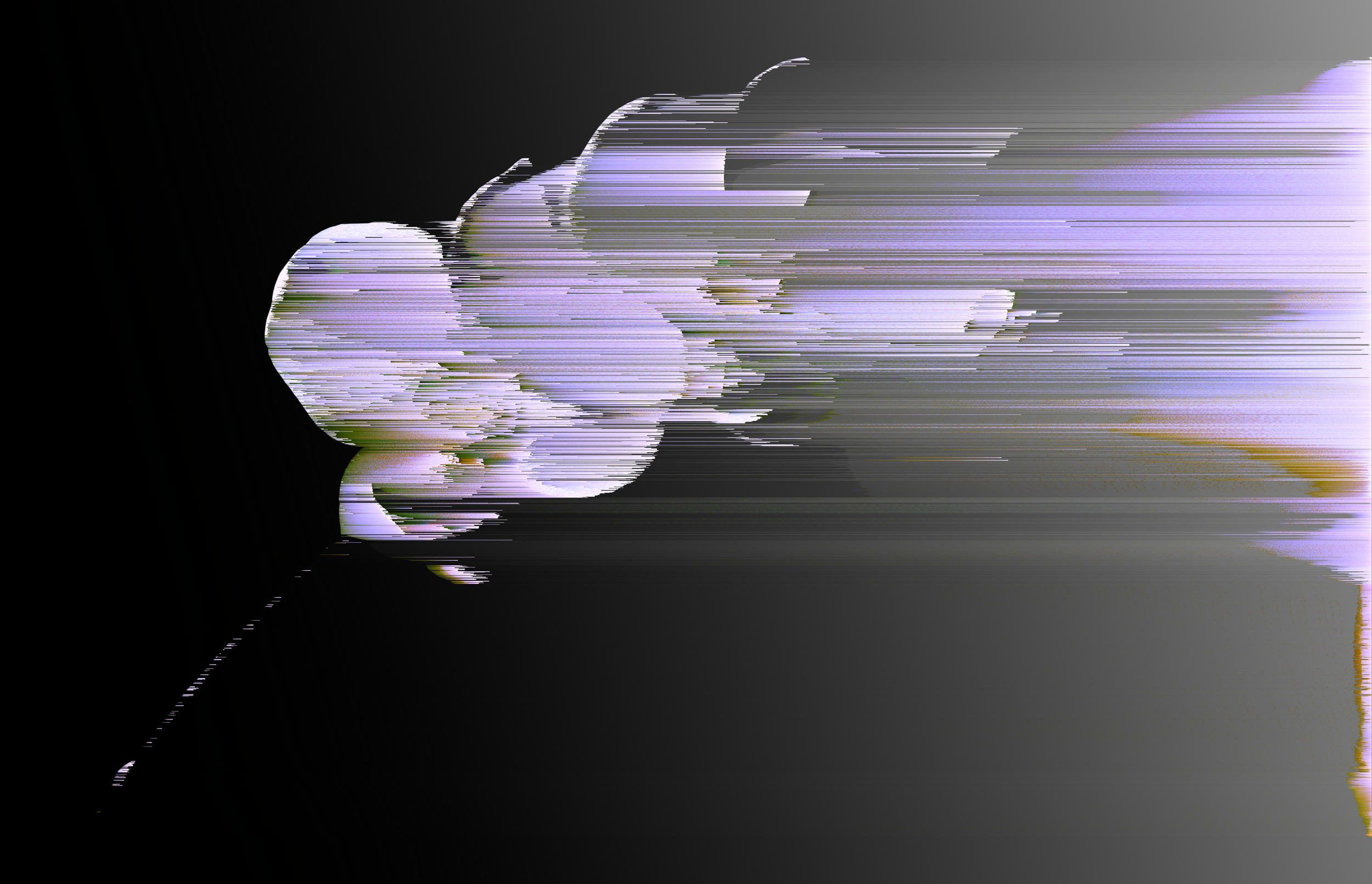

“OUR MACHINES ARE DISTURBINGLY LIVELY & WE OURSELVES FRIGHTENINGLY INERT”
— Donna Haraway
“We are surrounded by the traces of the past, a veritable garden of ghosts,” warns the authors of Arts of Living on a Damaged Planet: Ghosts and Monsters of the Anthropocene. The title of this show by Andrea Wolf, “Garden of Ghosts,” places us in that paradox: a space that cultivates lives that are no longer but that have not stopped emitting the echoes of their presence.
The artist has been inspired, among other sources, by the book Pharmako-AI, co-written by K. Allado McDowell with the GPT-3 Artificial Intelligence language model capable of composing its own text. At one point, the machine writes: "Plants want to be heard, and humans have forgotten how to listen." A new question then arises: are those plants the ghosts, or are we the ones who have already forgotten how to live? Furthermore, as Donna Haraway asserts in A Cyborg Manifesto of 1991,” Our machines are disturbingly lively & we ourselves frighteningly inert”. The apocalypse that we projected into an imaginary future seems to be taking shape today in our consciences, rendering us increasingly powerless.
The choice of flowers is not arbitrary: their symbolism has traditionally been linked to "the transience of things, spring, and beauty," as explained by Juan Eduardo Cirlot. Cirlot also recounts the story of Lan Ts' ai-ho, one of the eight Chinese immortals, who always carried a basket of flowers and sang "verses alluding to the brevity of existence and the ephemeral nature of pleasures." It is not surprising either that flowers frequently appeared in Baroque representations of the Vanitas, combined with other images of evanescent beauty (musical instruments, sea shells, bubbles) around a skull to symbolize the inevitable triumph of death.
On this occasion, however, the artist chooses another way to represent the transitory condition of flowers and, by extension, of all nature. At
first glance, the images look like they have been blurred or melted. In actuality,an algorithm that functions like a virus has altered the individual pixels that compose them. Their delicate beauty has not been diminished but rather accentuated by the dissolution. This effect is enhanced in the works printed on a lenticular surface when, with our gaze, we activate one more step in this process.
Other movements also seem to be hidden under these images, layers of meaning that perhaps still continue beating, waiting to be heard. Because this garden of ghosts also expresses itself through sound spectra, such as those waves that form at the edges of some of these paintings and that seem to draw a murmur that we are not yet able to understand.
La Oficina de la Nada
January 2023
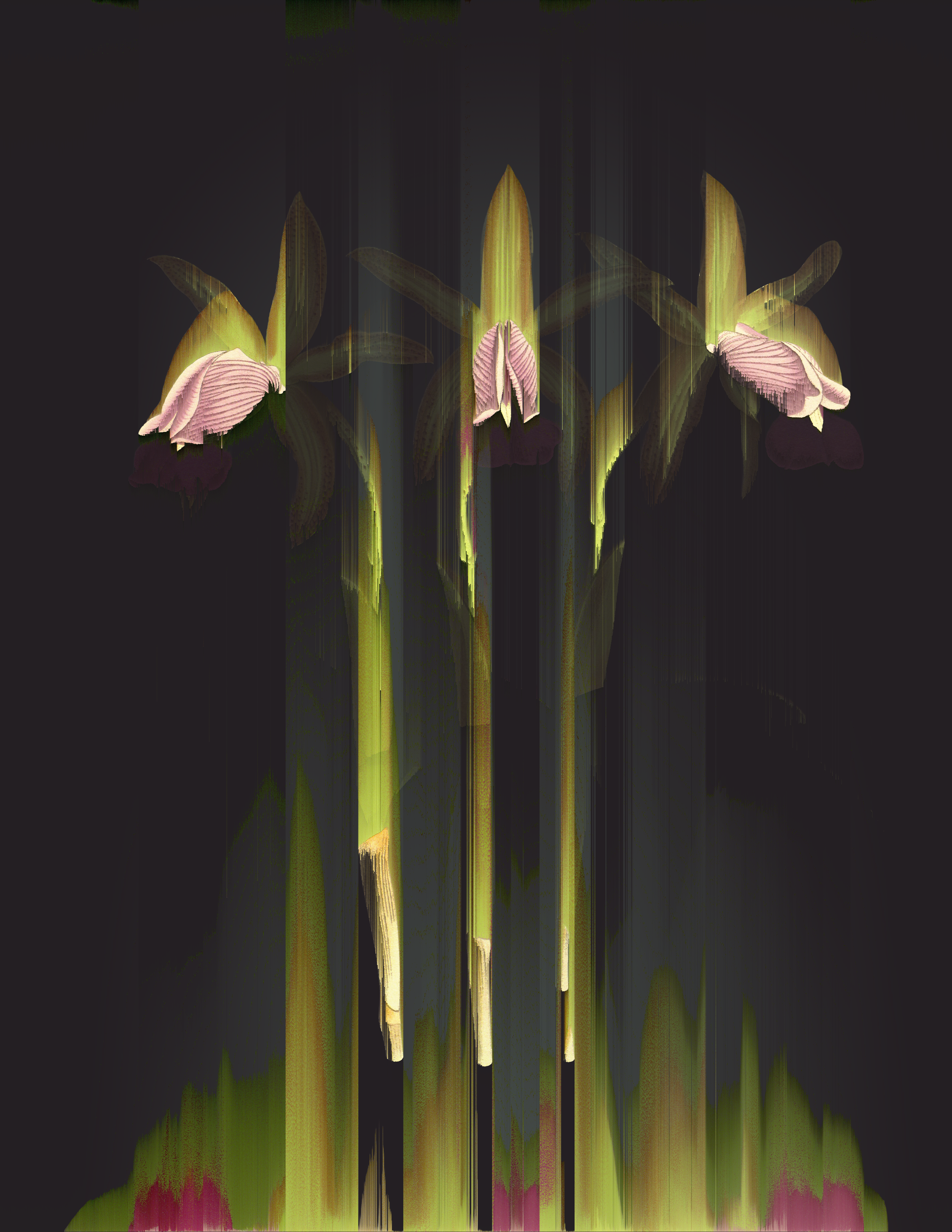
:: L89921, 2022 :: Lenticular print of botanical illustration digitally manipulated with pixel-sorting algorithm · 151x117cm · Framed
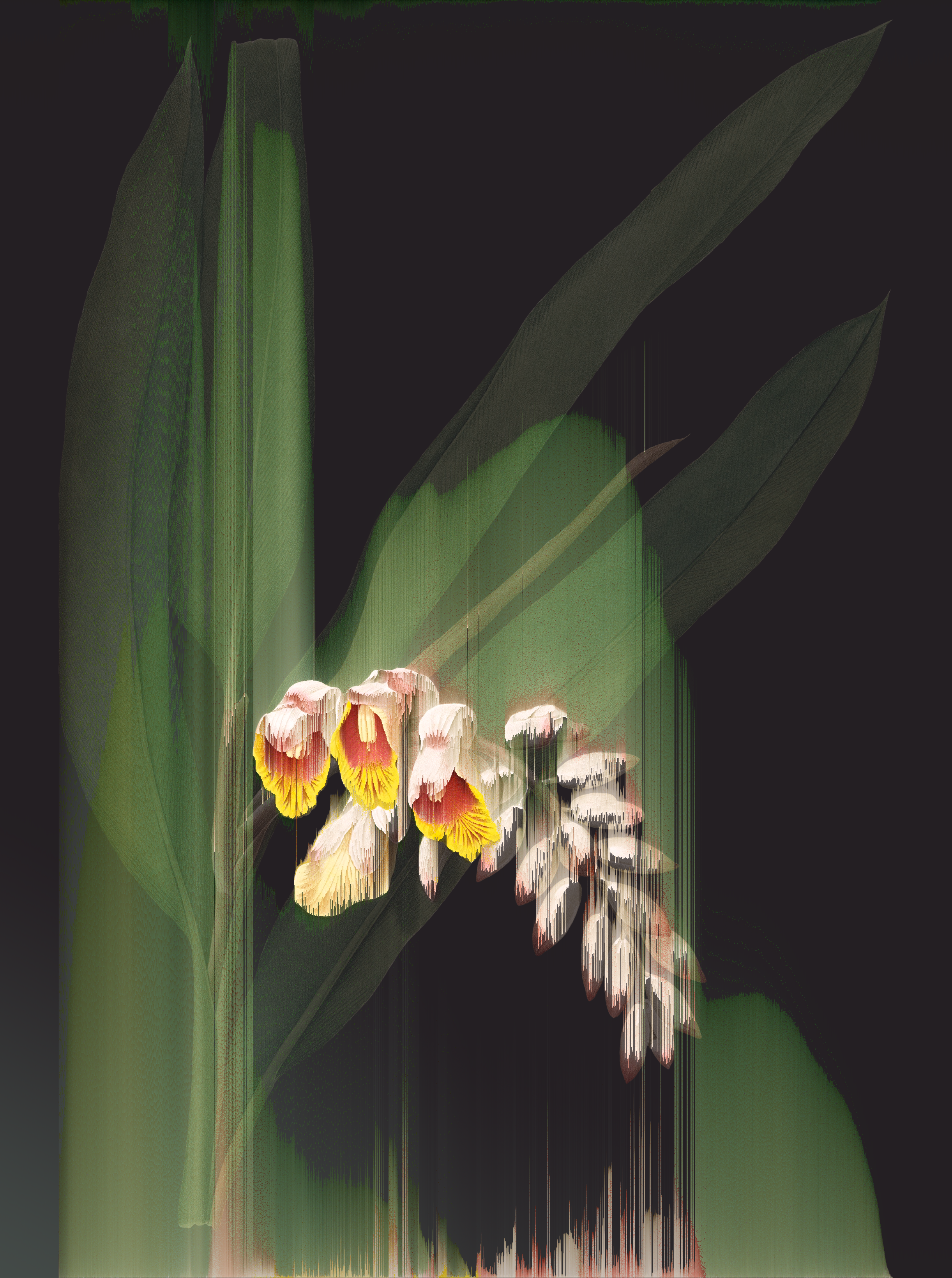
:: L78517, 2022 :: Lenticular print of botanical illustration digitally manipulated with pixel-sorting algorithm · 110x82cm · Framed
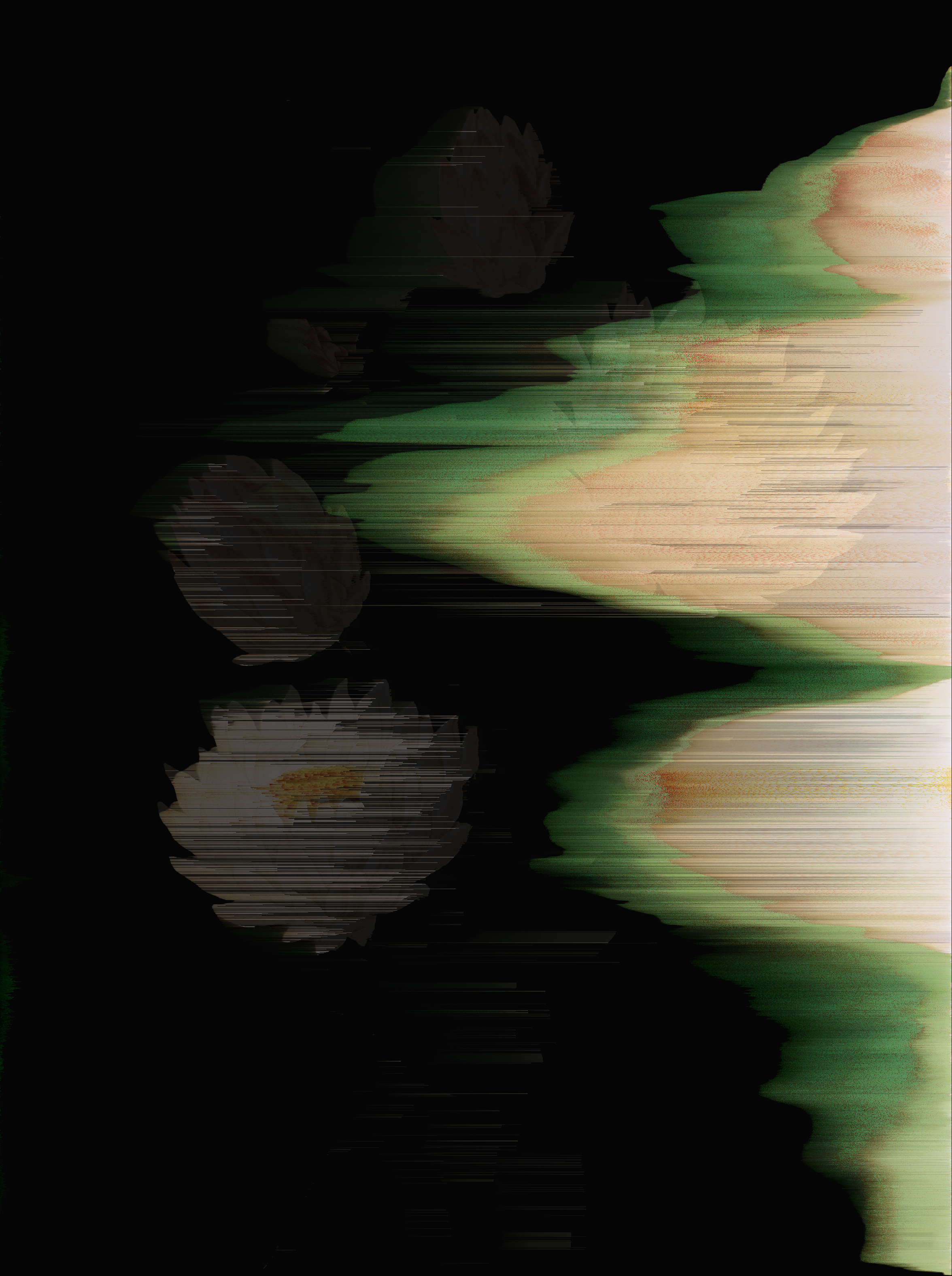
:: L45346, 2022 :: Lenticular print of botanical illustration digitally manipulated with pixel-sorting algorithm · 110x82cm · Framed




